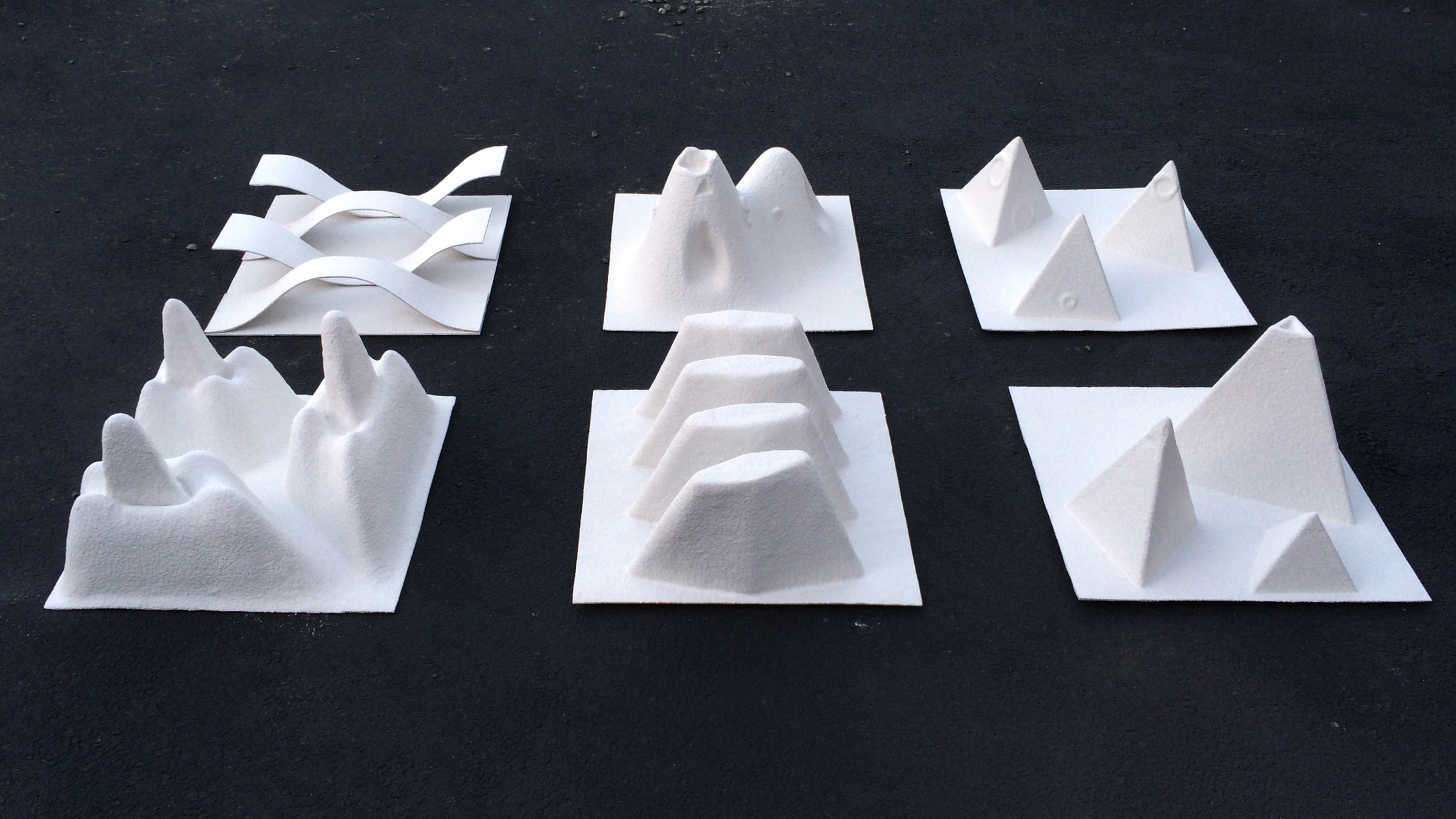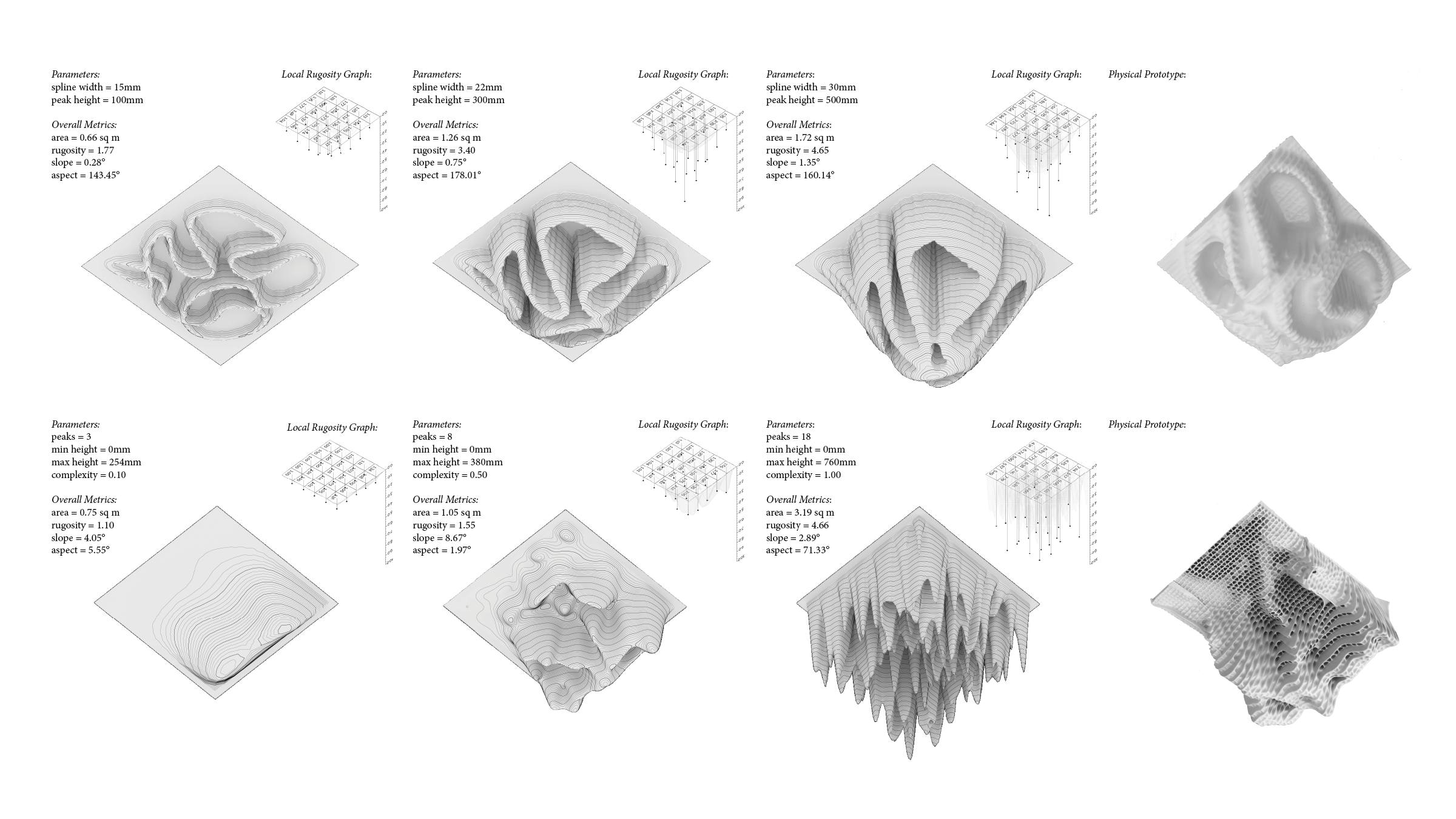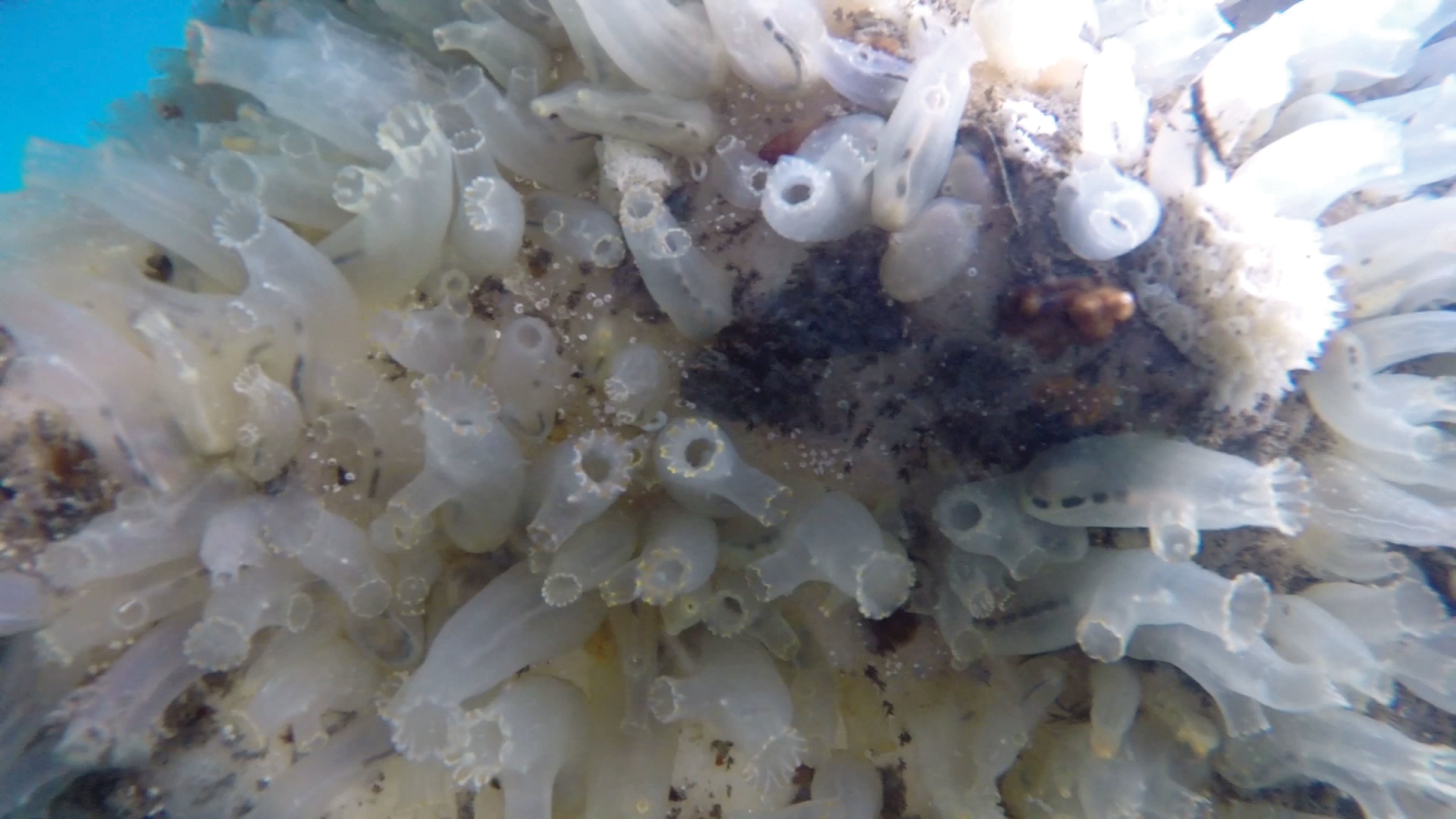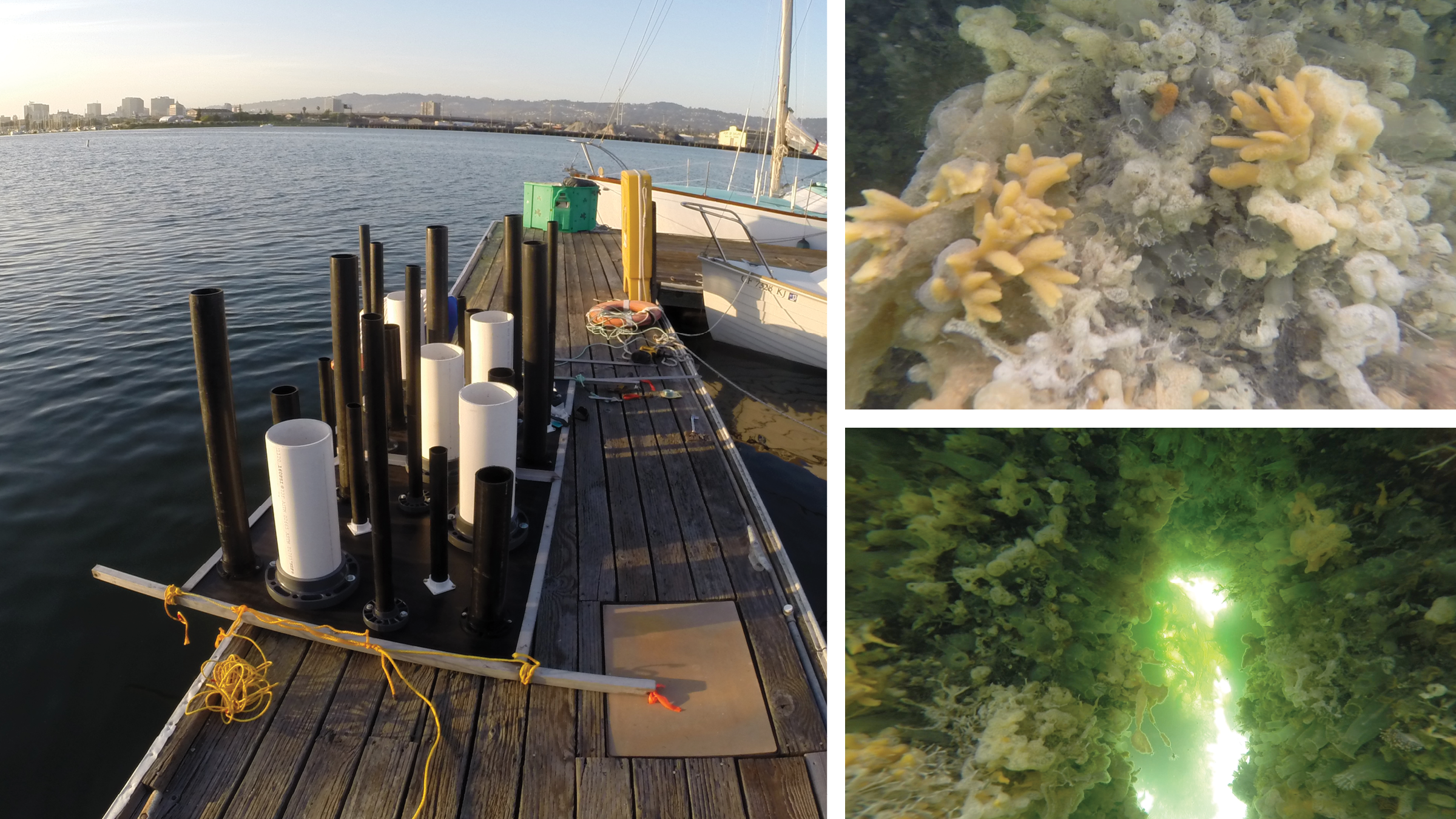Project Leaders: Adam Marcus, Margaret Ikeda, Evan Jones
The focus of this ongoing research collaboration is to develop and monitor contoured, digitally-fabricated fiber-reinforced polymer composite substrates that, through geometric variation, provide upside-down hills and valleys that can serve as habitats for invertebrate animals. These underwater topographies are optimized to create multi-scalar habitats that encourage settlement of different invertebrate species that contribute to the biological diversity of the marine ecology.
The research challenges conventional notions of “fouling”—the unwanted accumulation of marine life on the underside of floating structures that is commonly seen as a nuisance. Instead, this project seeks to invert that premise, proposing that optimized cultivation of fouling communities can promote broader ecological biodiversity, attenuate wave action, and reduce shoreline erosion, thereby helping to mitigate the effects of sea level rise on coastal communities. Potential applications of this highly performative material include floating structures, seawalls, and other erosion control structures.
Since 2014, the collaborative team of designers, ecologists, and manufacturers has produced nearly two dozen prototypes that have been installed underwater for monitoring and documentation. The success of these prototypes has informed the design and construction of the Buoyant Ecologies Float Lab, a larger prototype deployed in Oakland’s Middle Harbor in 2018, as well as habitats for native oysters in development at San Francisco’s Presidio.
Project Credits:
Project Leaders: Adam Marcus, Margaret Ikeda, Evan Jones
Marine Ecology: Benthic Lab, Moss Landing Marine Laboratories — John Oliver, Kamille Hammerstrom, Daniel Gossard
Fabrication: Kreysler & Associates — Bill Kreysler, Josh Zabel
Project Sponsors: Kreysler & Associates, Ashland Reactive Polymers, Autodesk Workshop at Pier 9, Port of Oakland












